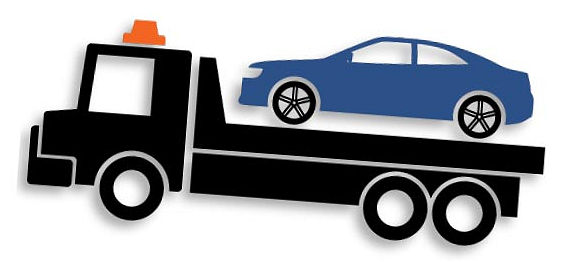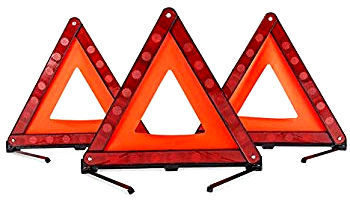

Mobile users:
For best results, view in Landscape mode.
Whether it be a dead car battery, flat tire,
mechanical issue, electrical issue or something
else, it pays to be prepared.
If you find yourself in an emergency situation it is always
important to remain calm and to not panic.
It is a good idea if possible to contact someone you know
and let them know your situation and location.
If you can't contact someone you know call your roadside
emergency service or 911.

When traveling long distances you
should have these items in your car:
Emergency phone numbers (roadside assistance, etc.)
Flashlight (with spare batteries)
Car cell phone charger
Road flares and reflective triangles
Jumper cables
Duct tape
Gloves and a blanket
Rain ponchos or umbrellas
Yellow Reflective Safety vests
Bottled water
Energy snacks
Paper towels
Reading material such as a book or magazine
Extra packs of cigarettes if you smoke
Portable radio with spare batteries
ABC Fire extinguisher
Ice scraper & snow brush
Small shovel and a bag of kitty litter or rock salt
Candles
Use the candles at night to light your location and provide
some heat in the car between running your engine/heater.
Remember safety first when using candles in the car.
It's very important that make yourself and your car
highly visible.
This is a good time to put on your yellow reflective safety vest,
lift the hood of your car and put on your 4-ways.
Set up your reflective triangles or flares to warn oncoming
traffic.
One of the most common roadside emergencies is a flat tire.
Driving with a slow leaking tire is dangerous, especially
at freeway speeds.
The slow leak could be caused
anywhere from a nail in
the tire or a bent rim.
The tire and rim should be looked at by your mechanic as
soon as the leak is noticed.
Otherwise if the tire does happen to fail while you are
driving,
causing a blowout, you could lose control of your car
causing
injury to yourself and others.
If you can replace the tire
yourself, make sure that you have
a good jack and the proper lug wrench on hand.
If you have to pull over, try to find the safest location
away
from traffic.
Tire sealants like Fix-A-Flat
is only useful if you've got a slow leak
in the tire or a small hole, and provide a temporary
solution until
you can drive to a safe location to change your tire or get
to the
shop to have it repaired or changed.
Fix-A-Flat works by injecting a
liquid sealant into your
flat tire to seal the leak, and a gas to fill the rest of
the tire.
The sealant leaves a big mess
inside, its liquids creates cobweb
like slime which gets around inside the tire, and it's a
real hassle for the mechanic to get all of it off the tire
and rim
when they do a tire repair, especially if it's dried on.
Tire sealants are especially
bad in the Winter, it can freeze
inside your tire, knocking your wheel out of balance.
safely do so, or if you have a Roadside assistance like AAA,
they will come out and help you.

